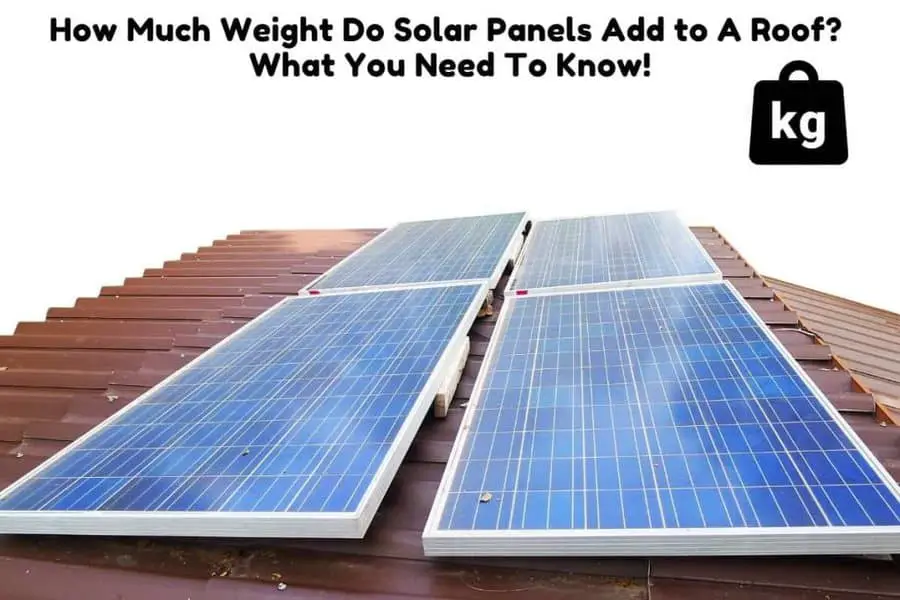2021 was a record year for residential solar, growing 30% with over 500,000 new installations. Rooftop solar is the default setup for most solar installations and for good reason.
Installing solar on your roof is cheaper and does not take up additional space. In fact, it is a good use of space that would otherwise lie idle. But what are the cons of rooftop solar?
One of the biggest concerns people express when installing solar panels on their roof is whether it will damage their roof. Solar panels add about 2.5 pounds of weight per square foot to a roof.
What impact will that have on your roof and is your roof designed to hold that much weight?
On a side note! If you’re in need of a reliable and high-performance portable solar panel, We strongly recommend the Jackery SolarSaga 100W Portable Solar Panel (Amazon Link).
With a high conversion efficiency and foldable design, this solar panel is easy to transport and set up, making it perfect for outdoor activities like camping, hiking, and RV trips.

The US solar cell technology used in this panel ensures that you get the most efficient and reliable solar charging possible.
There is also a 60W option that is more affordable (Amazon Link)
Today we will explore the relationship between weight, solar panels, and your roof. Can you walk on a solar panel? And does your roof need extra support to handle the added weight of solar panels? If you are concerned about this and want to know the answers then this article is for you.

How Do You Calculate the Weight of A Solar Panel?
Solar panels weigh between 35 to 45 pounds. The average weight for most brands is 40 pounds. 72-cell solar panels weigh more than 60-cell solar pounds, averaging about 50 pounds. 72-cell solar panels are typically used in commercial installations.
Most 60-cell solar panels are roughly 5.5 by 3.25 feet and these are the solar panels typically used in residential installations. 72-cell solar panels are larger at roughly 6.6 by 3.25 feet. Both 60-cell and 72-cell solar panels can be used in residential applications. 60-cell solar cells are not used for commercial applications because they have fewer cells and hence a lower energy yield. (Source)
Can Solar Panels Be Too Heavy?
Solar panels are not too heavy for a roof. 60-cell solar panels at an average of 40 pounds, add between 2.3 to 2.5 pounds of weight to a roof. The slightly larger 72-cell solar panels at an average of 50 pounds, add between 2.4 to 2.5 pounds of weight.
In most cases, a roof should be able to support the additional weight of solar panels. With that being said, your roof has to be inspected by your roofing or solar contractor. Before you can proceed with installing solar panels you have to consider the age, condition, and type of roof.
- A roof can last anywhere between 15 to 100 years depending on what type of material it is made of. Metal and clay tile roofs have the longest lifespans. Contractors might not install solar on a roof that’s 10 years older or more.
- You also have to check the condition of the roof to make sure there is no damage caused by storms, termites, or aging.
- Pitched roofs can handle more weight than flat roofs. Different types of roofs have different capacities in terms of how much weight they can handle. Clay tile roofs can hold more weight than other types of roofs for example.
Also, we highly recommend that you checkout our post “Why Are Solar Panels So Heavy? How Much Do They Weigh !“
Does a Roof Need Extra Support for Solar Panels?
A roof does not need extra support to hold solar panels. Solar panels and mounting equipment add a maximum of 4 to 4.5 pounds per square foot of dead load to your roof. A roof can support between 20 to 27 pounds of dead load so it is sturdy enough to handle the extra weight.
The average solar system requires up to 20 solar panels. It may be more or less depending on your energy needs. If solar panels and mounting add 4.5 pounds and we multiply that by 20 then that means a total added weight of 90 pounds on a pitched roof that can support up to 300 pounds. (Source)
What can you do to reduce weight?
If you are worried about the weight but you want to have a system that produces as much energy as possible the first thing you want to do is get the most efficient solar panels.
Monocrystalline solar panels are the most efficient solar panels at between 18 to 24%. The more efficient your solar panels are, the fewer solar panels you will need. If you were to use thin-film solar panels which have a lower efficiency of less than 16%, you could easily have to double the number of solar panels you use to produce the same amount of energy.
What if you need extra support?
In 95% of cases, there is no need to add extra support. If the roof is too old, adding solar would be unwise since you would have to remove the solar panels when it comes time to replace the roof. If it has damage then repairs should be made before solar panels are added.
If additional support is needed, it can be added to the trusses or rafters. This is only after the roof has been inspected and deemed not too old or damaged.
Can Solar Panels Damage Your Roof?
Installing solar panels will not damage your roof if the installation is carried out by a certified professional following the proper procedures.
With metal roofs, the installation is simple with clamps being used to fix the solar panels in place. With other roof types like asphalt or clay, holes have to be drilled into the roof to fix the mounting system that holds the solar panels. The holes are, however, sealed to prevent leakages. (Source)
How Much Weight Can a Solar Panel Hold?
A solar panel can bear a maximum weight of 50 pounds. The average man weighs about 200 pounds so this means standing on a solar panel would break it.
Find out more in our post “You Can Walk on Solar Roof Tiles? Is it Safe!“
A solar panel is made from solar cells, a metal or aluminum frame, and a layer of tempered glass that protects the solar cells. Putting direct pressure, for example by standing or sitting on the solar panel would crack and break the solar panel.
This is why it is important to design a solar array with an allowance for space to walk between the solar panels. This makes it easier to service solar panels without walking on them.
